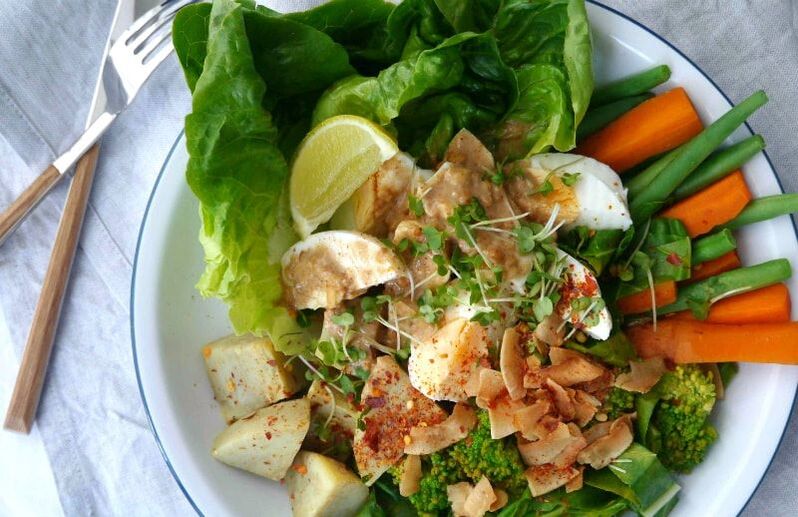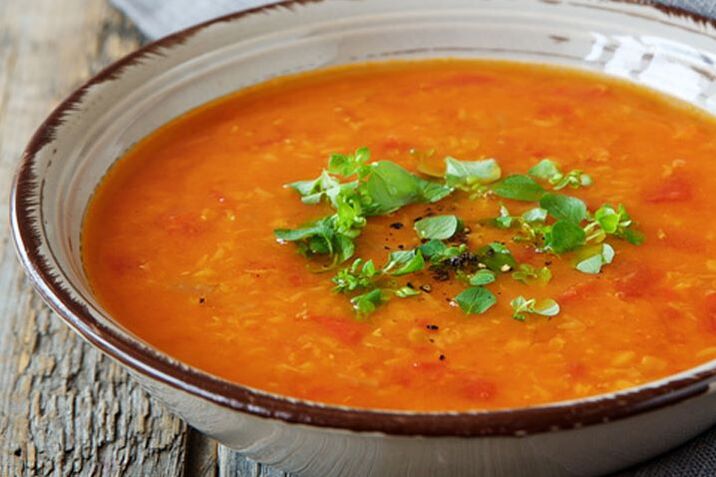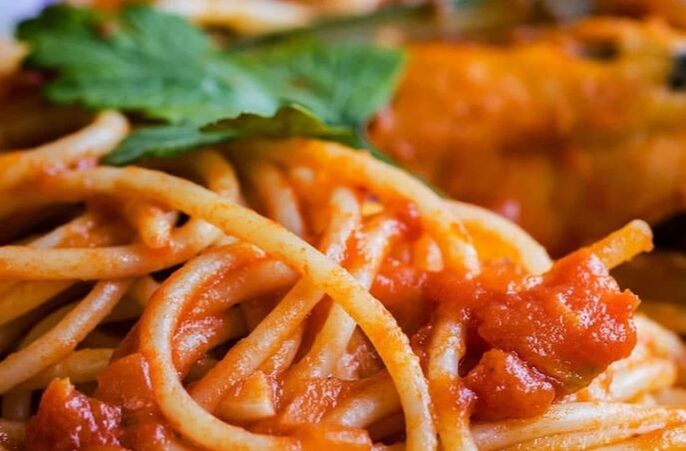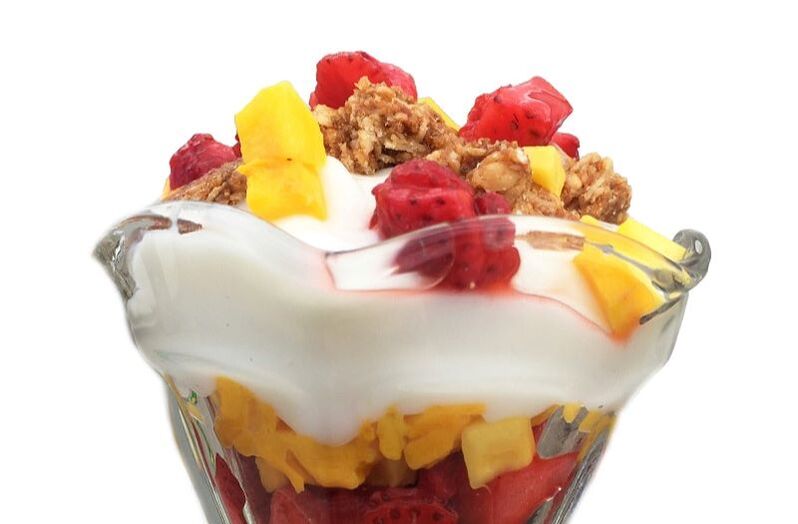UNIT 4 |
Diabetic Meal Planning
Diabetic Meal planning with menus an recipes is based on carb counting, which means you're allotted a certain number of Carb Choices per meal. First a quick word on what carbs are. In general, the total carbohydrates in food equal the sum of the sugar, starch, and fiber. But it's only the net cabs that people with diabetes need to worry about. The net carbs include the glucose available from sugar and starch during the process of digestion. Glucose from sugar and starch can be absorbed from the digestive tract into the bloodstream, and therefore can raise your blood sugar. While fiber is also a carb, it's not digestible, so its glucose is not available to you. We determine the amount of net carbohydrate in food by substracting the grams of fiber from the total grams of carbohydrate. That leaves us with a number , in grams, of net carb, from which we determine how many Carb Choices a food constitutes.
WHAT IS A CARB CHOICE?
Simple: 15 grams net carbohydrate = 1 Carb Choice. How much is that? One medium apple or orange, one slice of whole wheat bread, 1/2 cup of beans, 1/3 cup brown rice, or one whole grain cookie.
Simple: 15 grams net carbohydrate = 1 Carb Choice. How much is that? One medium apple or orange, one slice of whole wheat bread, 1/2 cup of beans, 1/3 cup brown rice, or one whole grain cookie.
HOW MANY CARB CHOICES CAN YOU EAT?
On average. If you have type -1 or type-2 diabetes, we'd recommend 3 to 5 Carb Choices for breakfast (45 to 75 grams), 3 to 5 for lunch (45 to 75 grams), and 0 to 3 for supper (0 to 45 grams). Keeping supper's Carb Choices as low as possible will keep with your overnight and morning blood sugars (more on that in the introduction to the Breakfast section). Staying within the range of about 9 to 13 Carb Choices 9135 to 195 grams) per day will help you experience the best blood-sugar control, weight loss, and overall resolution of your diabetes problems. We've provided portion-size information for all recipes, so you can even count your dessert portion as part of your carb total for the meal.
On average. If you have type -1 or type-2 diabetes, we'd recommend 3 to 5 Carb Choices for breakfast (45 to 75 grams), 3 to 5 for lunch (45 to 75 grams), and 0 to 3 for supper (0 to 45 grams). Keeping supper's Carb Choices as low as possible will keep with your overnight and morning blood sugars (more on that in the introduction to the Breakfast section). Staying within the range of about 9 to 13 Carb Choices 9135 to 195 grams) per day will help you experience the best blood-sugar control, weight loss, and overall resolution of your diabetes problems. We've provided portion-size information for all recipes, so you can even count your dessert portion as part of your carb total for the meal.
WHAT WAS OUR PROCESS FOR DECIDING ON RECIPES?
There were two main goals: nutrition and taste; and one lesser goal: case of preparation. The goal is counseling diabetes patients, cooking them food, and teaching them how to cook it for themselves.
In general, each recipe should be:
There were two main goals: nutrition and taste; and one lesser goal: case of preparation. The goal is counseling diabetes patients, cooking them food, and teaching them how to cook it for themselves.
In general, each recipe should be:
- Plant-based. No meat, milk, cheese, eggs, or other animal products. We believe its animal proteins and tat that are the cause or major contributor to most, it not all, chronic diseases in the Western world, with obesity and diabetes at the top of that list. If the person is into transition stage, you can help then out trying protein flip, then eventually replace meat with plant-based substitutes.
- Cholesterol-free. That's covered by no animal products. We get all the cholesterol our bodies need through natural processes, and any extra cholesterol we ingest through our diet is unnecessary and unhealthful.
- Whole grain heavy. Low on nutritionally bereft, processed food. Delicious desserts, yes, but no packed candies here.
- High-fiber. Enter the whole grains. An official "high-fiber diet means 16 or more grams of fiber per day. Our diet should include 40 to 50 grams of fiber per day! Fiber makes you feel full, but has no calories, and doesn't affect your blood sugar.
- Low-glycemic. To reduce blood-sugar spikes and drops. It's high-glycemic foods such as white flour, white potatoes, cornflakes, white sugar, and certain fruits, that cause a roller coaster effect in the blood sugar. After the blood sugar sky rockets, it plummets, leaving you craving more carbs. Because of the high-fiber content of most of diabetes friendly recipes, and because of the right mix of plane based fats with the right kinds and amounts of carbs, this diet is dramatically lower-glycemic than traditional diabetic diets. High-fiber, low-glycemic foods account for why, on our diet, most people with diabetes can eat two to three meals per day instead of the six recommended by many plans. Please keep in mind, though, that not every individual recipe maybe low glycemic for you: the Glycemic Index (GI) will affect different people in different ways-even at different times of the day. So don't use the GI as your only menu planning tool.
- Low-calorie. People on a Diabetes program consume on average 1,250 to 2,100 calories per day (usually closer to the lower end), but feel satisfied because of the high fiber and low GI, By contrast, most adults consume between 2,000 and 3,000 calories per day, and many consume a lot more. So, develop a course that should be much lower in calories than those typically eaten on the standard diet.
- Not high-fat. On average, people on a Diabetes program will get 11 to 25% percent of their total calories from fat-all good, plant-based fat. Most professional health agencies recommend you eat less than 30 percent of your calories from fat-and they claim it's okay to get most of it from "lean meats" like chicken; which is not the CulinaryMD way.
- Low-saturated fat. Mainly by eliminating animal products, we've gotten this unhealthy fat" down to about 4 percent of total calories on average, which is less than one-third of the amount eaten by the average people.
- Trans-fat-free. No partially hydrogenated (or fully hydrogenated) fat typically found in many desserts, snack foods, or processed foods in general. The average caloric intake of people includes about 2.6 percent trans-fat, which is way too much if you re trying to keep your weight, cholesterol, and heart disease risk down
- Low-sodium. No more than 550 milligrams per serving, with most recipes much lower per serving if you're used to salty foods, we urge you to give your taste buds a few weeks to adapt. You'll be surprised.
- Proper protein. On average, for a guest enjoying our total plant-based cuisine, protein accounts for about 15 percent of total calories, a health-protecting level that's not way too high, as it is in the Standard American Diet. Plant-based means you get none of the concentrated protein calories associated with animal products (and no animal diseases, either).
TASTE AND EASE OF PREPARATION
Next, we considered taste, and here's where we had a lot of honing to do. You need trial-and-error to keep a recipe within those strict nutritional parameters and still make it taste good. Finally, we considered how "quick and easy" the recipes should be for the average working person.
Next, we considered taste, and here's where we had a lot of honing to do. You need trial-and-error to keep a recipe within those strict nutritional parameters and still make it taste good. Finally, we considered how "quick and easy" the recipes should be for the average working person.
Food Preparation
You may access all the recipes listed below. Choose one recipe in each category and create 1 set of meal course that you can recommend to patients/clients or your family member. All recipes have instructions that you may also use as guide. Document your activity by taking photos of each recipe, starting from Mise en place up to the final presentation with brief description of your planned meal.
|
.
|
Unit Task
Please organize your documentation in a single file and send us the completed task using PDF format.





